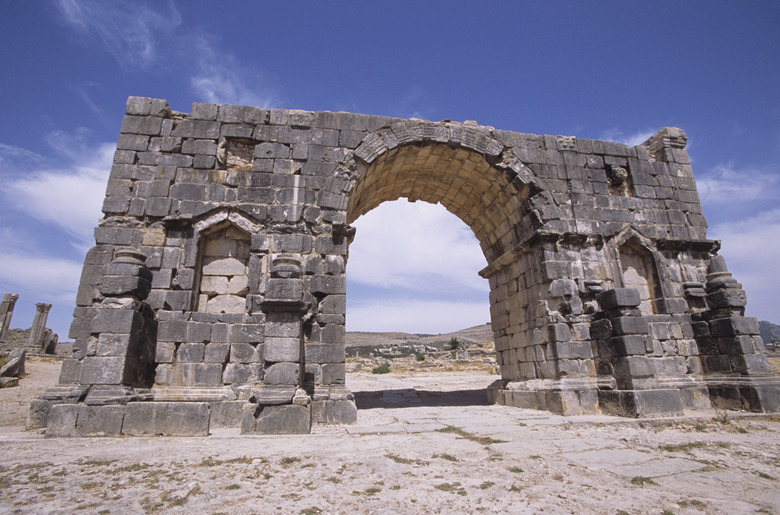Benefits Of A Roman Arch
Although the Romans did not invent the arch, they did perfect and popularize it. One reason they were able to do so was the invention of concrete. Roman concrete contains a special bonding agent found in volcanic dust from central Italy. The Romans used their concrete to build massive arches, such as those that support the aqueducts and the Coliseum. Today, arches are common in architecture because of the stylistic and engineering benefits they offer.
Self-Supporting
One benefit of a Roman arch is that it supports itself. A good way to visualize how this works is to imagine standing several feet away from another person. Now imagine that you both raise your hands, stiffen your arms and lean forward so that your palms push against the other person's. The other person's weight counteracts your own, allowing the two of you to maintain an arched position. Similarly, the piled bricks on each side of an arch lean against one another, stabilizing the opening.
- Although the Romans did not invent the arch, they did perfect and popularize it.
- Today, arches are common in architecture because of the stylistic and engineering benefits they offer.
Ability to Create Long Structures
Arches can be "stacked" upon one another and placed in rows, creating long stretches of self-supporting structures. The Roman aqueducts are a good example of this. A row of large arches is at the bottom. Another row of smaller arches is in the middle. A top row of very small arches supports the sluice that water travels down.
Many Types of Arches
Another benefit is that architects can manipulate the arch shape to create new types of arches. For example, by lengthening the depth of the arch, you can create a "barrel vault," or long archway with no supporting pillars in the middle. Penn State University says that most stadiums today have barrel-vault entryways that allow numerous attendees to enter one place simultaneously. Another example of an arch is a dome, which is one leg of an arch rotated 360 degrees.
- Arches can be "stacked" upon one another and placed in rows, creating long stretches of self-supporting structures.
- Another benefit is that architects can manipulate the arch shape to create new types of arches.
Style Benefits
Stylistically, a Roman arch calls to mind the power and influence of the Roman Empire. For that reason, many modern structures use arches to convey strength and nobility. For example, the Arc de Triomphe in Paris uses a Roman arch. Another example is the U.S. Capitol Building in Washington, D.C., which uses a combination of arches and domes.
